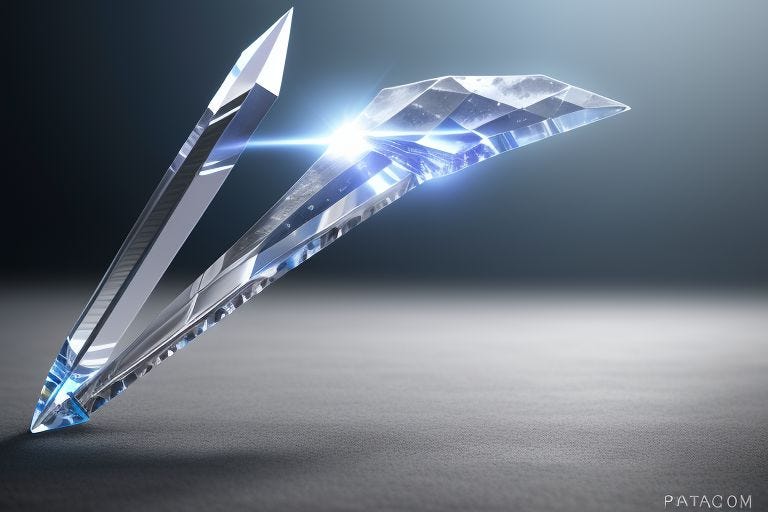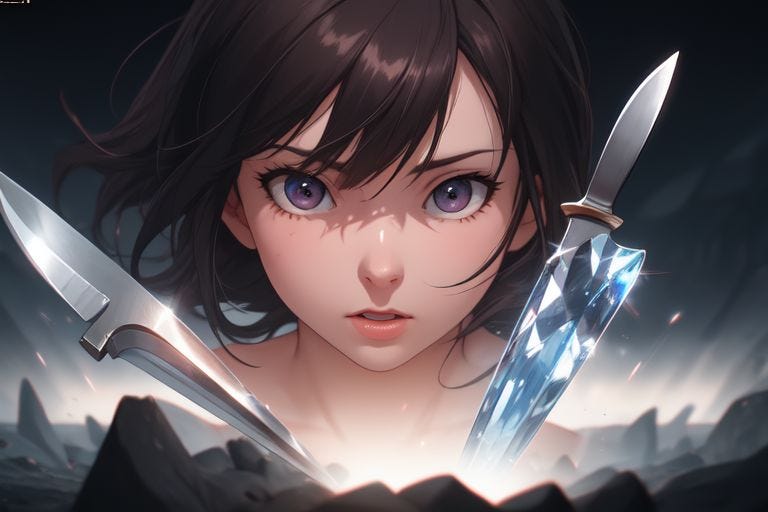The Enigmatic Crystal Dagger: Unearthing Ancient Mysteries
Written on
Chapter 1: The Discovery of the Crystal Dagger
An extraordinary crystal dagger, dating back 5,000 years, was unearthed in Spain by a team of researchers. This striking artifact may have held significant symbolic importance for the prehistoric Iberian civilization. Archaeologists uncovered the remains of several individuals arranged in a ceremonial manner within an ancient tomb near Seville, alongside this remarkable piece: a beautifully crafted knife made from rock crystal. Spanish scholars have hailed this exquisitely carved dagger as the most advanced and visually stunning example of rock crystal craftsmanship found in Prehistoric Iberia, dating back to at least 3000 BCE.

The majority of tools used by prehistoric Europeans were made from chert and flint. In contrast, tools crafted from "rock crystal" (macro-crystalline quartz) were considerably rarer. Nevertheless, humans developed a method of producing these exceptional items during late prehistory in several European regions, including the southwest Iberian Peninsula around the third millennium BCE. The social value associated with rock crystal tools likely led prehistoric communities to regard them with great esteem, despite their more complex manufacturing processes and the lesser availability of raw materials compared to sedimentary rocks. It's fascinating to think that ancient peoples might have been even more captivated by these stunning objects than we are today.

Located in Valencina de la Concepción, near Seville, Spain, one of the eight megalithic tombs at this site is particularly significant for the study of Copper Age Iberia, and it housed this exquisite rock crystal knife measuring 8.5 inches in length. Between 2007 and 2010, archaeologists excavated the Montelirio Tholos tomb, an impressive structure with a 39-meter (128-foot) corridor leading to a central chamber that is 4.75 meters (15.5 feet) in diameter. From this main chamber, a small passage leads to a secondary chamber.
Research teams discovered at least twenty-five human remains, accompanied by an array of lavish grave goods, including shrouds and garments adorned with tens of thousands of amber beads, numerous flint arrowheads, pieces of gold, ivory artifacts, and, of course, the brilliant crystal dagger at the center of this narrative.

The dagger was located in a compartment at the back of the main chamber, alongside arrowheads made from rock crystal. Interestingly, no additional artifacts were found in the remaining areas of the chamber. Items discovered near the access corridor leading to the main chamber suggest offerings similar to those found in the main corridor, where arrowheads, though crafted from inferior materials, were discovered in large quantities near an altar and other ceremonial items.
It is believed that poisoning was responsible for the deaths of several individuals, including at least one male and a number of females interred within the Montelirio tomb. The male, possibly a person of high status, was found in a room with the females' remains arranged in a circle around him.

The dagger was discovered with an ivory hilt and sheath, indicating its importance. The distance from sources of the quartz used in the dagger suggests that the materials were obtained from far away. Experts propose that this further explains why crystal arrowheads and daggers were exclusive to a select group of affluent individuals, signifying both wealth and social status.
The exotic nature of the materials and the specialized knowledge required for their transformation imparted significant social meaning. These items likely served as burial goods exclusively for the elite during this historical period.

The dagger's blade, connected to an ivory handle—another highly valued and non-local material—suggests that its owners were individuals of high social standing. Additionally, rock crystal likely held symbolic significance as a material with unique meanings and implications. Historical records indicate that in some communities, quartz and rock crystal were associated with life, magical abilities, and connections to ancestry.
Chapter 2: The Significance of the Crystal Dagger
The first video titled "THE CRYSTAL DAGGER | Spectacular Bronze Age Burial in S.W. Spain" offers a captivating look at the archaeological significance of the crystal dagger and its context within ancient burial practices.
In the second video, "5000 Year Old Dagger Brought to Life," viewers can explore detailed recreations and insights into the craftsmanship of this ancient artifact.